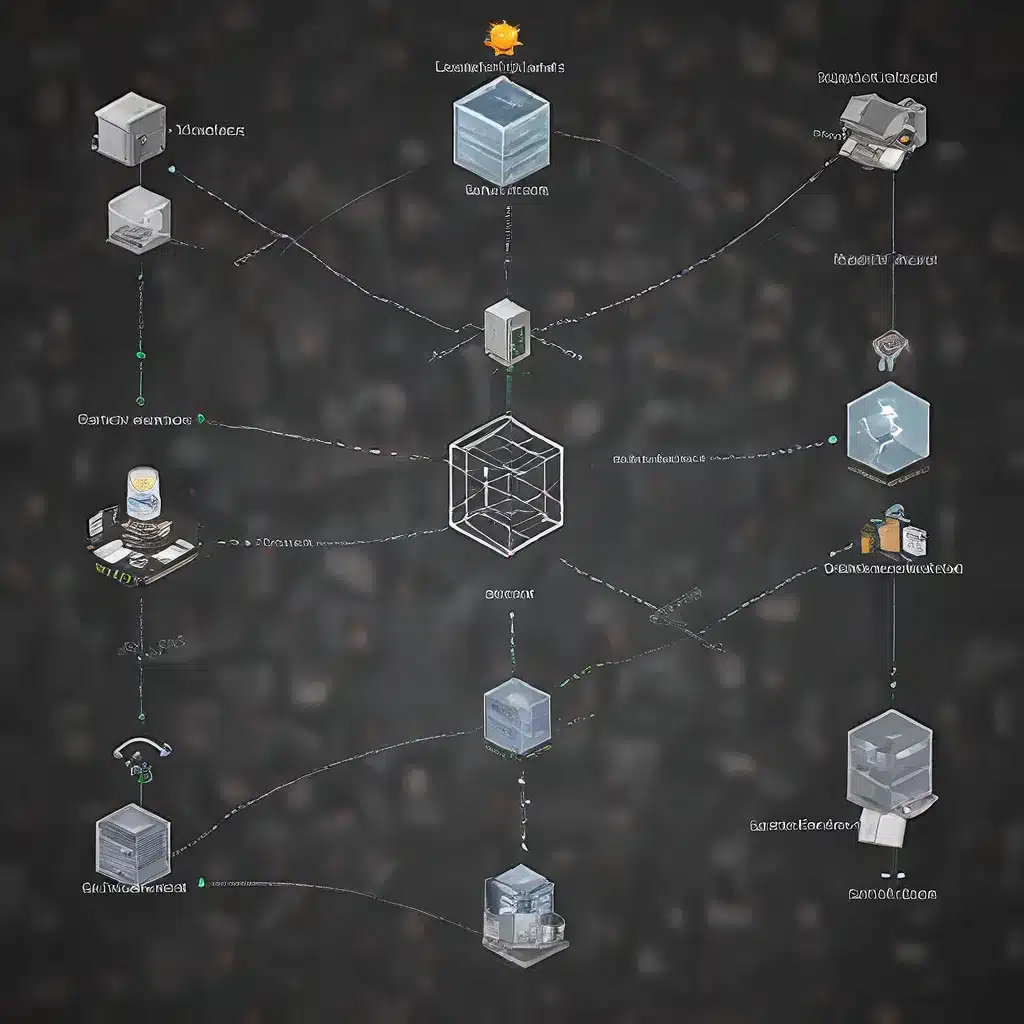
The Importance of Energy Efficiency in Sensor Networks
Sensor networks play a crucial role in the rapidly evolving Internet of Things (IoT) ecosystem, enabling a wide range of applications, from smart city monitoring to industrial automation. However, the energy constraints of sensor nodes pose a significant challenge in ensuring the longevity and reliability of these networks.
Sensor nodes are often deployed in remote or inaccessible locations, making battery replacement or recharging difficult and impractical. As a result, energy efficiency has become a primary concern in the design and operation of sensor networks. Optimizing energy consumption not only extends the lifetime of individual nodes but also enhances the overall performance and resilience of the entire network.
Distributed algorithms have emerged as a promising solution to address the energy management challenges in sensor networks. By leveraging the decentralized nature of sensor nodes, these algorithms can dynamically adapt to changing environmental conditions and network topology, ensuring efficient utilization of available energy resources.
Distributed Algorithms for Energy Management
One of the key aspects of distributed algorithms for energy management in sensor networks is the load balancing mechanism. This approach aims to distribute the workload across the network, preventing the premature depletion of energy in certain nodes while underutilizing others.
Dynamic Load Balancing
Dynamic load balancing algorithms continuously monitor the energy levels of individual nodes and redistribute the workload accordingly. This adaptive approach ensures that high-energy nodes take on a greater share of the tasks, while low-energy nodes are relieved of their responsibilities, extending the overall network lifetime.
Clustering algorithms are a common technique used in distributed load balancing, where sensor nodes are organized into groups or clusters. Each cluster has a designated cluster head responsible for coordinating the data collection and transmission within the cluster. By rotating the cluster head role among the nodes, the energy consumption can be evenly distributed, preventing the premature depletion of any single node.
Energy-Aware Routing Protocols
In addition to load balancing, distributed algorithms can also optimize energy consumption through energy-aware routing protocols. These protocols consider the remaining energy levels of nodes when selecting the most efficient data transmission paths, avoiding the routing of data through low-energy nodes.
One such example is the Energy-Efficient Congestion-Aware Routing (EECAR) protocol, which combines energy efficiency and congestion control to extend the network lifetime. EECAR dynamically adjusts the data transmission rates based on the energy levels of the nodes, ensuring that high-energy nodes are utilized more efficiently, while low-energy nodes are offloaded to preserve their remaining power.
Sensor Network Security and Energy Management
As sensor networks become increasingly interconnected and ubiquitous, the security of these systems has become a critical concern. Sensor nodes are often deployed in unattended or hostile environments, making them vulnerable to various security threats, such as eavesdropping, data tampering, and denial-of-service attacks.
Maintaining energy efficiency and security simultaneously presents a unique challenge in sensor network design. Cryptographic operations and secure communication protocols can consume significant amounts of energy, potentially offsetting the energy savings achieved through other optimization techniques.
Distributed algorithms can play a crucial role in balancing the tradeoffs between energy efficiency and security. By dynamically adjusting the security measures based on the energy levels of the nodes, these algorithms can maximize the overall network lifetime while maintaining an acceptable level of security.
For example, lightweight cryptographic algorithms can be employed on low-energy nodes, while high-energy nodes can implement more robust security mechanisms. Additionally, secure data aggregation techniques can reduce the communication overhead and energy consumption associated with data transmission.
IoT Applications and Energy Management Challenges
The Internet of Things (IoT) has revolutionized the way we interact with the physical world, enabling a wide range of applications that leverage sensor networks for data collection and monitoring.
From smart cities and industrial automation to healthcare and environmental monitoring, IoT sensor networks are transforming the way we live and work. However, the energy constraints of sensor nodes pose a significant challenge in sustaining these innovative applications.
Distributed algorithms for energy management play a crucial role in ensuring the long-term viability and reliability of IoT sensor networks. By optimizing energy consumption and load balancing, these algorithms can enhance the performance and resilience of IoT systems, unlocking their full potential to improve our quality of life.
For example, in a smart city scenario, distributed algorithms can optimize the energy usage of street lighting systems, adjusting the illumination levels based on real-time traffic and pedestrian data collected by sensor nodes. This approach not only reduces energy consumption but also enhances the safety and efficiency of the urban environment.
Similarly, in industrial automation, distributed algorithms can manage the energy consumption of sensor-equipped machinery, balancing the workload across different production units to extend their operational lifetime and reduce maintenance costs.
Conclusion: The Future of Sensor Networks and Energy Management
As the Internet of Things continues to evolve and permeate our daily lives, the importance of energy-efficient sensor networks will only grow. Distributed algorithms for energy management and load balancing will be crucial in unlocking the full potential of these transformative technologies.
By optimizing energy usage, enhancing security, and balancing the workload across sensor nodes, distributed algorithms can pave the way for innovative IoT applications that improve our quality of life, increase operational efficiency, and reduce our environmental impact.
As we navigate the evolving landscape of sensor networks and IoT, the continued development and adoption of energy-efficient distributed algorithms will be essential in shaping a sustainable and connected future.
Stay tuned to sensor-networks.org for the latest updates and insights on sensor network design, energy management, and the future of the Internet of Things.